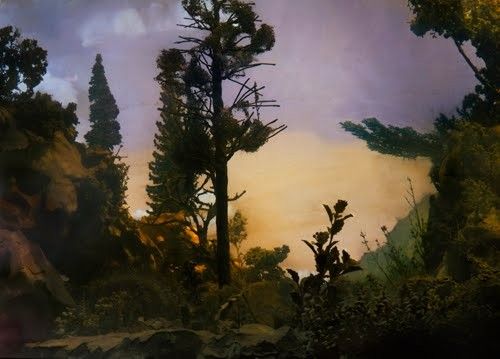|
|
Unrealistic Landscape
|
With greater attention to the environmental perception by psychologists over recent decades, landscape is regarded as the raw material with which to study human perceptions and human information processing. Thus Daniels & Cosgrove defined landscape, not in physical terms but as an outward expression of human perception: "a landscape is a cultural image, a pictorial way of representing, structuring or symbolising surroundings." Meinig combined the physical and the psychological: "any landscape is composed not only of what lies before our eyes but what lies within our heads.".
In recent decades the term environment has gained wide usage. Jay Appleton distinguished environment from landscape by referring to the latter as "the environment perceived". An advantage which the term environment has over landscape is, as Bourassa noted, that environment can refer more readily to urban scenes although the term urban landscape is also in common usage. As the term environment embraces the total physical, biological, cultural and aesthetic components of an area, it is generally regarded as too broad and encompassing a term for landscape.
The terms scene, scenic and scenery are inadequate descriptions of landscape. With its roots in the theatre where a scene describes a portion of a play, so a scene can describe a portion of a landscape. Scenery, which describes the decorative backdrops used on a stage, also refers to the general appearance of a place, particularly a picturesque view. While it can be used interchangeably with landscape it does not convey the same depth of meaning.
The term landscape aesthetics or just aesthetics is frequently used in the literature. Aesthetics has a more controversial origin than landscape. It derived from the Greek aisthesis meaning "sense perception". The term was used as the title of the book Aesthetica (1750-58) by Alexander Baumgarten (1714-62), a minor German philosopher who incorrectly applied the Greek term to a critique of the beautiful or the theory of taste (sociology). Thus the term which originally applied to the broad field of sense perception was restricted to the area of taste. Immanuel Kant in 1781 criticised this use and applied it in accordance with its classical meaning "the philosophy of sensuous perception". However, the corrupted term aesthetics gained popular acceptance entering England after 1830 and, according to the Oxford English Dictionary, within a century of the coining of the meaning by Baumgarten, it was in use widely throughout Europe.
|
|









